Motor cultivators: features and tips for choosing
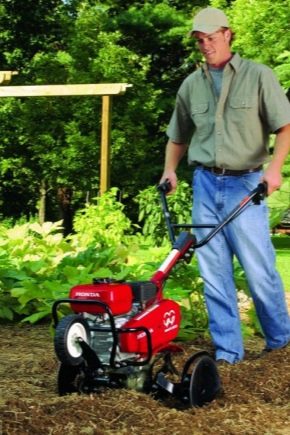
A motor-cultivator is an irreplaceable assistant for people who take care of the garden and vegetable garden. The specified agricultural machinery has many functions and performs many tasks. There are many models of motor cultivators on the modern market: from fairly simple to very powerful.
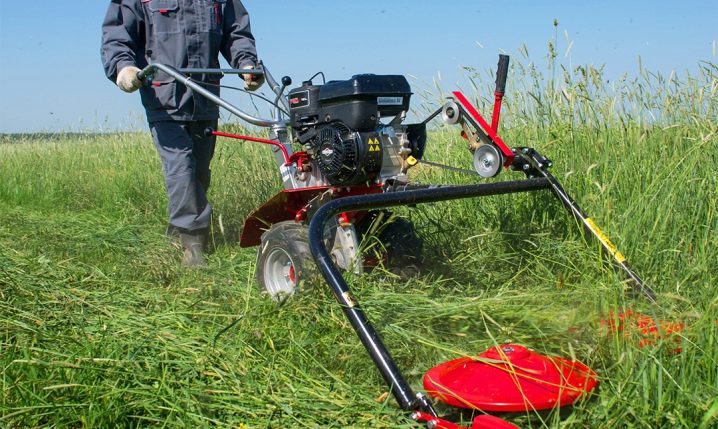
What it is?
Before proceeding to a detailed examination of the features of motor cultivators, you should first of all find out what it is. So, a motor-cultivator is a light agricultural machine that is used for plowing and cultivating the land using special cutters and certain attachments.
This technique is a real "life buoy" on land plots of different sizes.
It helps to quickly and smoothly plow or loosen the land, as well as prepare suitable furrows and carry out high-quality harrowing of the land.
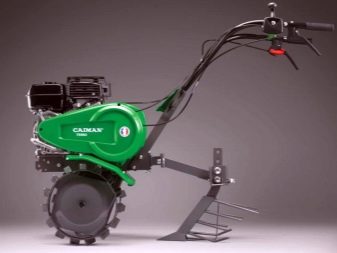
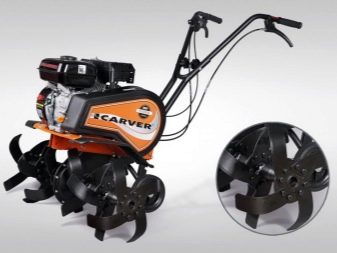
There are many varieties of this agricultural machinery. Many gardeners / gardeners resort to its use.
Such equipment is ideal for land work in the country.
Design features
Such popular agricultural machinery as a motor-cultivator is assembled from a number of necessary parts.
- Frame.
- Internal combustion engine running on gasoline. It can be two-stroke or four-stroke.
- Tank designed for gasoline or for oil-gasoline composition (such tanks are equipped with models of motor-cultivators "Mole").
- U-shaped manual device with control handles fixed on it.
- A rotor required for fixing cutters that differ in their direct purpose.
- A bracket-type device for securing the opener and accessory attachment. Attachments include items such as openers or cart mounts.
- Wheels. There are models with one, two or three wheels.
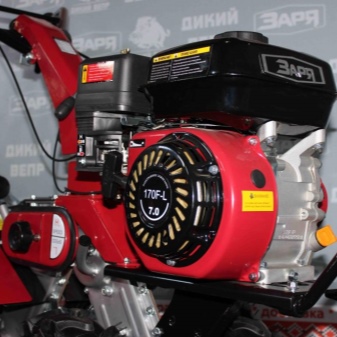
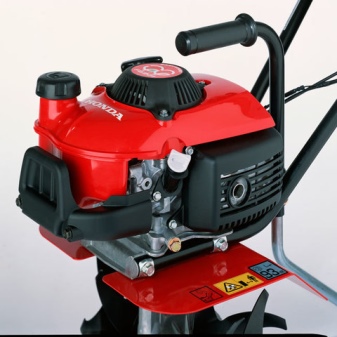
The most important unit of this motorcycle, of course, is the engine.
Devices manufactured by American, Italian and Japanese firms are rightfully recognized as the highest quality and most reliable devices. These engines are equipped with the highest quality cultivators. In this case, the technique itself can be produced by a different brand than the engine manufacturer.
Principle of operation
Before going to the store for a suitable and high-quality cultivator, you should understand what its principle of operation is. The main job of this technique is to effectively loosen the soil. This is done using special star-shaped cutters. Unlike a simple plow, the cutter does not turn the soil layer, therefore it does not contribute to soil erosion.
The processing of the site with the use of such motor vehicles is rightfully recognized as more progressive and safer. Man himself controls this unit. He must follow the technique, guiding it with the help of a n-shaped bent part with handles installed on it.
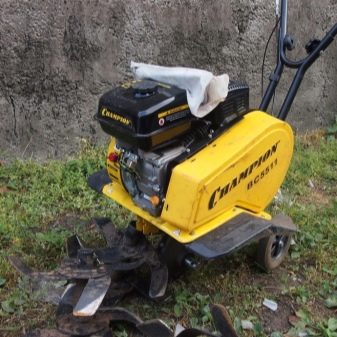

On the handles used to control equipment, special clutch levers, a gear shift switch (both rear and front) are fixed. The presence of a reverse gear in the design is required in those situations when the cutters begin to get stuck in dense or stony ground in a capricious area.When the equipment is fed back, it will be possible to prevent a serious breakdown of the cutter or transmission (repair of these elements can cost a tidy sum, so it is better to avoid their breakdowns).
Simultaneously with loosening the earth, weed roots are crushed.

Special disc-type cutters can also be mounted on the rotor. These parts are able to dig a groove into which it will then be convenient to plant potatoes.
Cutting edge processing will also be easy and hassle-free. Subsequently, it will be possible to fill it up with earth again, swapping places left and right disc cutters. In addition, the latter details are ideal for creating neat beds.
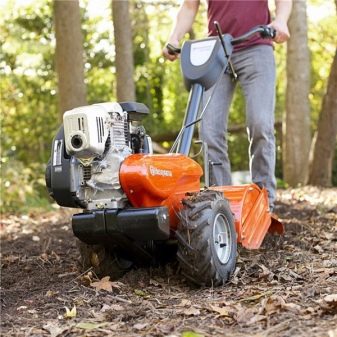
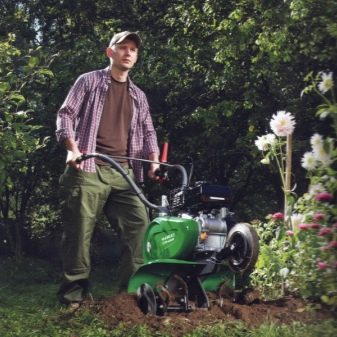
One of the most important components of a motor-cultivator is such a detail as a coulter. It is a rectangular metal rod. It is mounted on a frame with fixed cutters. This element plays a braking role, which forces the cutters to sink deeper into the treated soil.
By setting the opener length parameter, it will be possible to adjust the depth of cut with the cutter of a piece of soil.
If the equipment contains not one, but two coulters, then they will give the equipment additional maneuverability. The cultivator will maneuver when a person presses on the left and right sides of the handle.
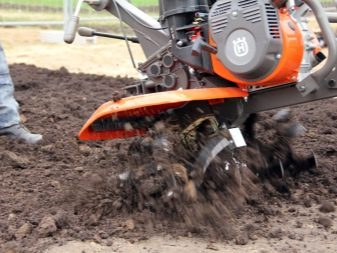
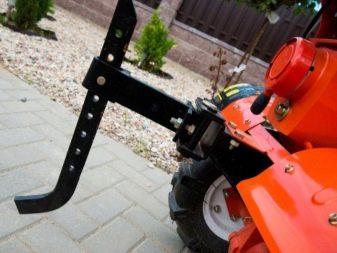
As you can see, the principle of this technique is quite simple and straightforward. To cope with it while cultivating the land, you do not need to have special knowledge or rich experience in such gardening procedures.
Varieties
As mentioned above, the cultivator is not represented by a single model. Several varieties of this useful technique can be found on the market. All modern engine-powered cultivators are categorized according to their size and weight.
There are such options for such a technique:
- ultralight (the weight of these units does not exceed 15 kg);
- lungs (their weight rarely exceeds 40 kg);
- average (the weight of these models varies from 45 to 60 kg);
- heavy (these models weigh more than 60 kg).
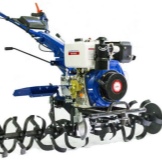
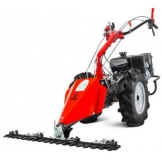
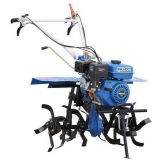

Basically, motor cultivators from the category from the lightest to the heaviest are equipped with motors, the increasing power of which ranges from 1.5 to 10 liters. with. But it also happens that the series (except for heavy items) is supplemented by a single-power engine (2 hp). This is due to the fact that a certain weight is required for the specified motor vehicles for a sufficiently impressive pressure on the cultivated land.
If this figure is insufficient, the cultivator can often bounce while working in denser soil areas.

The small-scale mechanization park includes not only motor-cultivators, but also motor-blocks close to them in design. Sometimes they are classified as heavy cultivators. These types of technology have a number of differences from each other. You don't need to confuse them.
Motoblocks are not only distinguished by a more impressive weight, but also by a more powerful drive. The fundamental difference between these two units lies directly in their design.


Compact ultralight versions of motor cultivators are very popular today.... This portable and lightweight equipment weighs between 10 and 15 kg.
With the help of such units, it is very convenient and easy to care for flower beds, flower beds, lawns, greenhouses and greenhouses.
Also, ultralight cultivators can be excellent helpers in the maintenance of small gardens.
This technique has a number of distinctive features:
- ultralight devices are highly maneuverable, which means they are easy to work with;
- the capture width of these units varies from 20 to 30 cm;
- they easily get into rather narrow and hard-to-reach areas;
- these models will cope with loosening the soil between the rows.
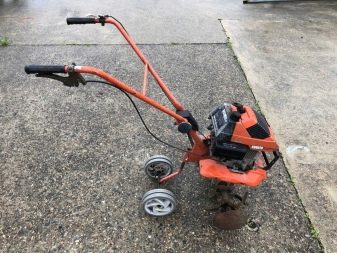
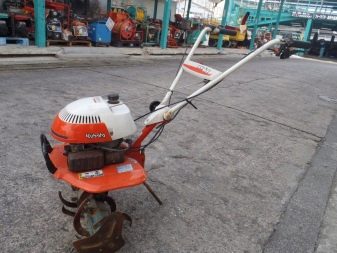
However, it must be borne in mind that ultralight devices are not suitable for working on large and neglected land plots where there is a large amount of weed. The penetration depth of these devices is only 10–12 cm. This is only enough for loosening the upper earth layer and removing small weeds.
The specified agricultural machinery is not only gasoline. There are also cars with electric engines. These specimens are powered by a stationary electrical network through a long coiled cable.
You can find on sale and such copies that run on batteries. Despite the convenience of using such options, in fact, it turns out that gasoline models are more economical.
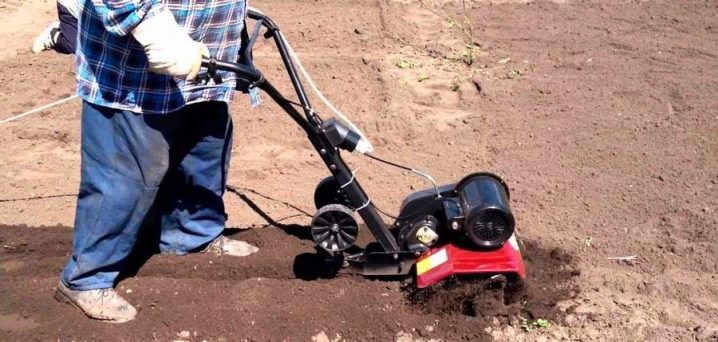
Ultra-light units are equipped with two-stroke and four-stroke engines. Usually, the engine power in these models does not exceed the 2 hp mark. with.
Experts recommend buying exactly four-stroke copies, since they are more powerful and reliable.
As for two-stroke cultivators - they "eat" much more gasoline, work with great noise, and they wear out much more quickly than four-stroke cultivators.
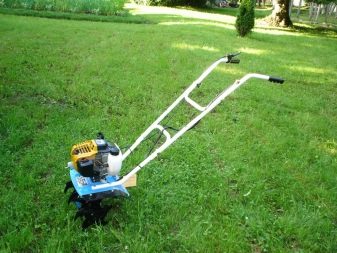
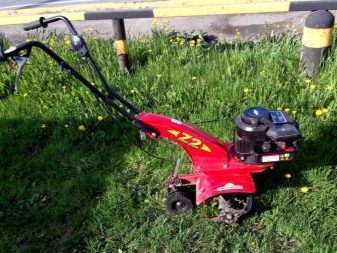
Light examples include motor cultivators, whose weight is from 30 to 40 kg. They are ideal for procedures on land plots where there is a not too problematic and well-groomed base.... Such units are used to loosen the upper earthen layer and prepare the land for vegetable planting.
The width of the soil grip in the light versions is greater than that of the ultralight ones, and reaches 50 cm.
It makes no sense to use light motor-cultivators to prepare land, the area of which is more than 8 acres - it will be a very difficult and long process.
For row spacing of 50 cm, this is an unnecessary width parameter, therefore it is recommended to choose such models in which there is the ability to narrow the grip by reducing the number of cutters.
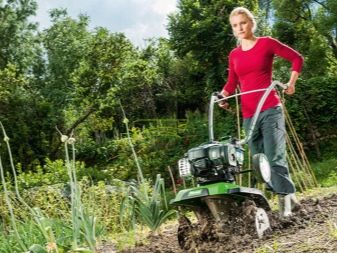
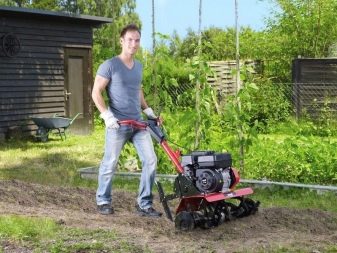
The parameter of the loosening depth of this motor-cultivator can reach 15–20 cm. Of course, many facts depend on the specific type of soil, its condition and the rotation of the cutters itself. Lightweight models do a good job of cultivating virgin lands or capricious clay soil.
Like ultralight, lightweight units are equipped with two-stroke and four-stroke engines. Their capacity varies from 2 to 4 liters. with. Due to the presence of a more powerful and efficient engine, the performance of such devices is several times higher than that of the previously described options.
As in the first case, here it is desirable to give preference to four-stroke units.
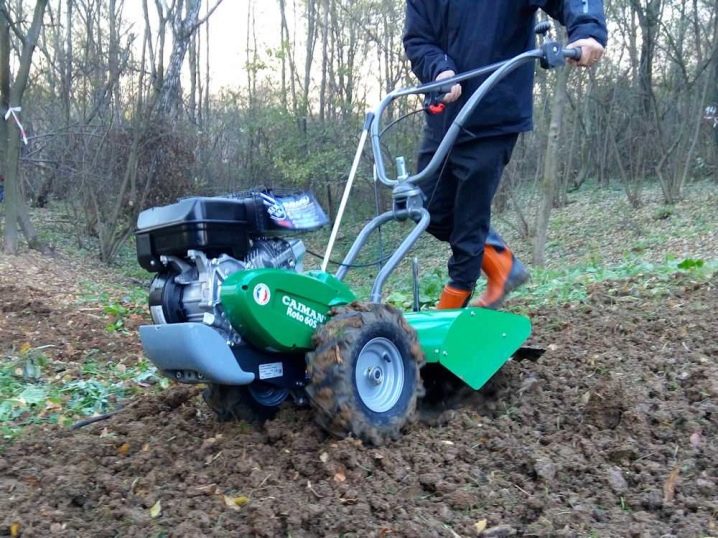
This technique is relatively lightweight, so it's easy to move it from place to place. However, low weight can negatively affect the convenience of working on the soil: when it encounters an obstacle (for example, a stone or a dense root), the cultivator can start to jump out of the ground.
Masters recommend buying equipment from this category with the maximum weight.
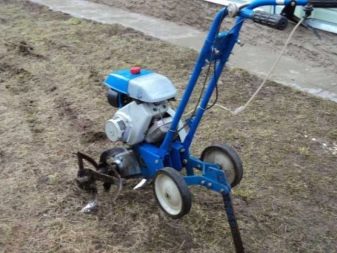
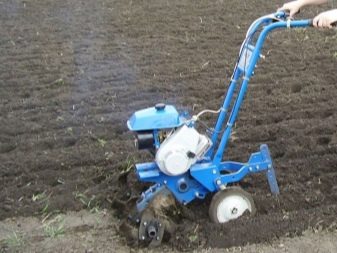
Light motor-cultivators are equipped with special cutters-rippers. In some models, there are also additions in the form of a hiller and a plow. More often on sale there are options with one speed. Some units also have a reverse speed, due to which the equipment can be much more maneuverable, being in a densely planted area.
Concerning popular medium-sized motor cultivators - their weight varies from 40 to 60 kg... Due to its mass, this technique is more stable, it does not bounce when meeting certain inclusions in the ground. Therefore, working with these units is easy and simple. It takes less time to prepare the soil.
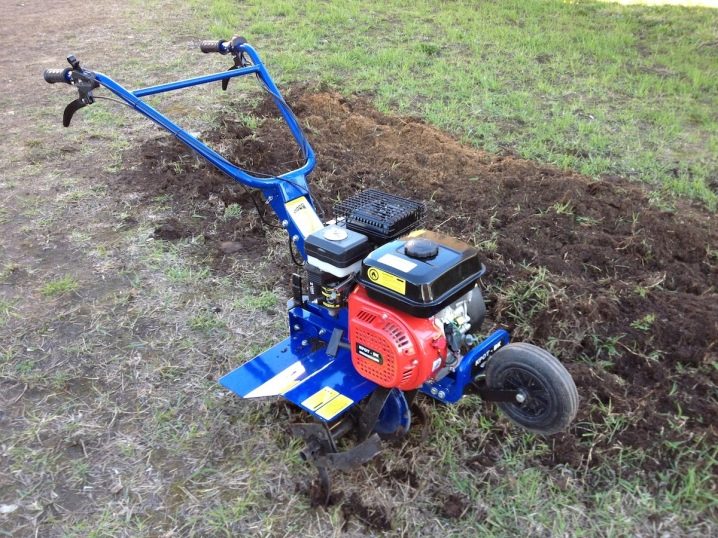
Here, the capture width reaches 85 cm. Due to this indicator, it is permissible to use medium devices in conditions of sufficiently large land plots. Their area may exceed 10 acres. But we must bear in mind that the maneuverability of equipment in difficult conditions runs the risk of significantly reducing... It will be very inconvenient to work the land between rows and in narrow areas.
With regard to the plowing depth - here there is an indicator of 25-30 cm. The cutters of this technique not only loosen the soil well, but also allow the device to move forward. All medium-sized cultivators are powered by four-stroke engines with a capacity of 4 to 6 liters. with... These devices have not only forward, but also reverse gear.
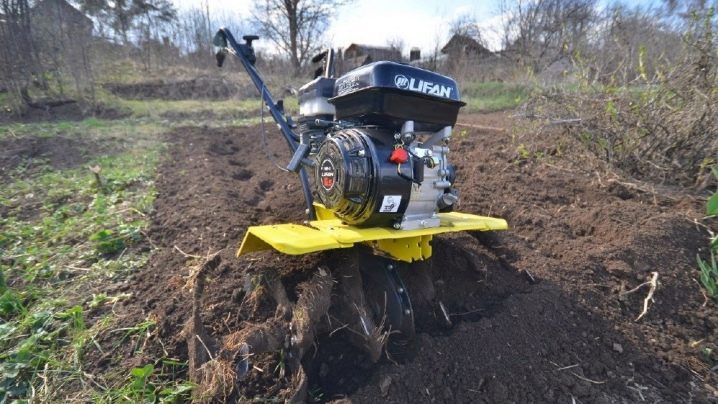
In a number of such devices, there is an addition in the form of a very convenient chain gearbox with impressive efficiency. Medium cultivators can be used in combination with attachments such as a small plow, mower or harrow.
The technique in this category is the most popular and widespread. It is chosen by many summer residents and gardeners. However, when it comes to plowing virgin soil, these units will not work, because their mechanical component cannot boast of high strength and reliability. The cutters are there in the front part, as in the examples described above, and this significantly increases the likelihood of their breakage in the event of a "meeting" with obstacles in the ground.
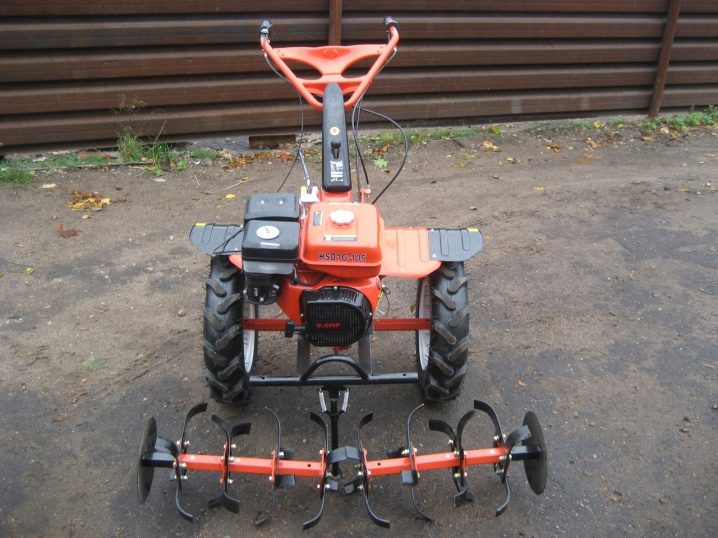
The real heavyweights are motor cultivators from the category of heavy agricultural machinery. Their weight can exceed 60 kg... It will take a lot of strength and energy to operate such models.
It is necessary to adjust the depth of these units using a special handle. The average plowing depth is 30 cm, like that of cultivators from the middle group, but the working width reaches 100 cm.

Heavy units equipped with a powerful four-stroke engine can have a capacity of 6 to 10 liters. with. The cutters in their design are at the rear, which makes these models are more reliable and less prone to breakage... In addition, these heavyweights usually have very stable and large wheels that allow you to work the land easier and faster. The described devices have several forward and reverse speeds.
As for additional equipment, there can be a plow, a hiller, a snow blower, a trolley (its carrying capacity can reach 500 kg).
Heavy cultivators are recommended if you need to care for a large garden plot. However, the main focus of these models is plowing virgin soils. That is why farmers and small agricultural enterprises so often turn to the operation of this technique.
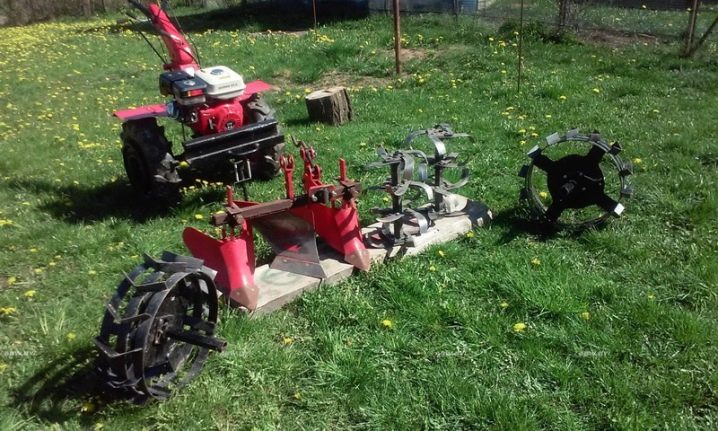
Model overview
The range of various cultivators today is greater than ever. You can choose the best option for both a small and ennobled, and for a large, but neglected land plot.

Hyundai T850
This is a reliable gasoline powered cultivator designed specifically for walk-behind tractors. It has a two-shaft engine with an increased resource. Such a unit is reliable and durable. It is not subject to damage, even if poor quality fuel was used. The gearbox of this model is made in a monolithic steel body. There is a system for easy manual start of the engine. All control parts of this unit are located very conveniently and ergonomically. They can be adjusted in 4 different positions.
This unit contains strong forged milling cutters with curved knives. The edges are equipped with restraints so that it is possible to form smooth edges and not touch the landings.
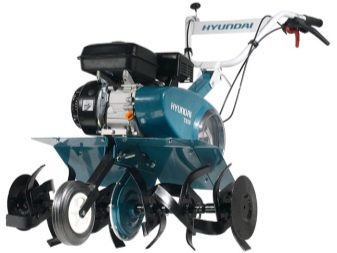
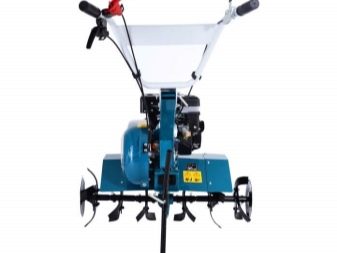
Husqvarna TF 338
This is a high quality motor cultivator from a world famous Swedish manufacturer, whose products are in great demand. This model is equipped with a powerful four-stroke engine. The Husqvarna TF 338 cultivator has an additional bumper designed to protect the engine during excavation and movement. Cooling in this model is classic - air.
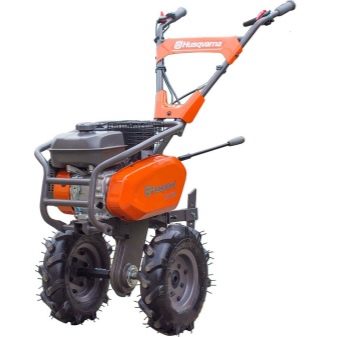

The transmission is chain.There are two reverse and two forward speeds. The wheels in this model are pneumatic, and the profile is quite aggressive. The Husqvarna TF 338 will not slip or burrow in the soil.
The fuel tank has an impressive 4.8 liters. At the same time, the consumption is economical, so the equipment can work for a long time without additional refueling. The control sticks are comfortable and can be folded.

Hammer RT-65A
This is a very economical gasoline cultivator with a capacity of 6 liters. with. The fuel tank in it is 3.6 liters, so it can function for a long time without refueling. The exhaust gases of this model contain a minimum percentage of harmful substances. The engine is cooled here by air, and the equipment is started using a manual starter.
The design itself is stable, small in size and adjustable in height.
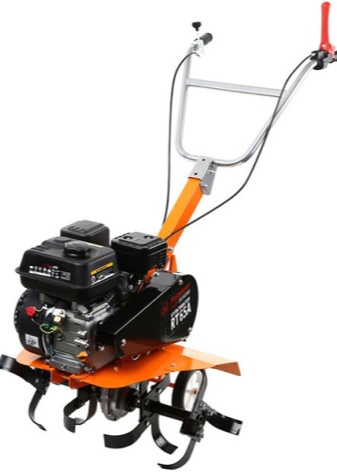
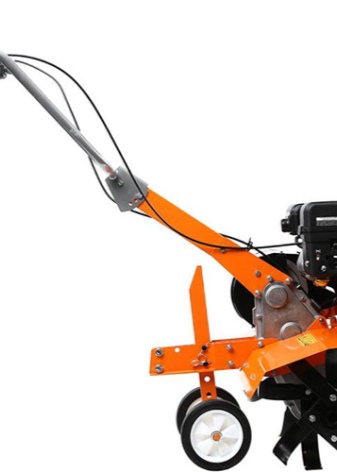
Selection Tips
When choosing a suitable model of a motor-cultivator, you should remember about simple tips and tricks that will help you choose the perfect unit.
- First, figure out in what conditions you plan to use such a technique. If we are talking about a large area with problem soil, then you will need to choose a more powerful and heavy model. If the site is refined and you do not plan to work with the cultivator too often, then you can get by with an ultralight or lightweight unit of low power.
- Pay attention to the build quality of the equipment. A motor-cultivator must be executed conscientiously. There should be no damage or loose parts in it.
- Buy only high quality branded models. Yes, they are more expensive, but they will last longer and will be more effective.
- Take this technique only from specialized stores.
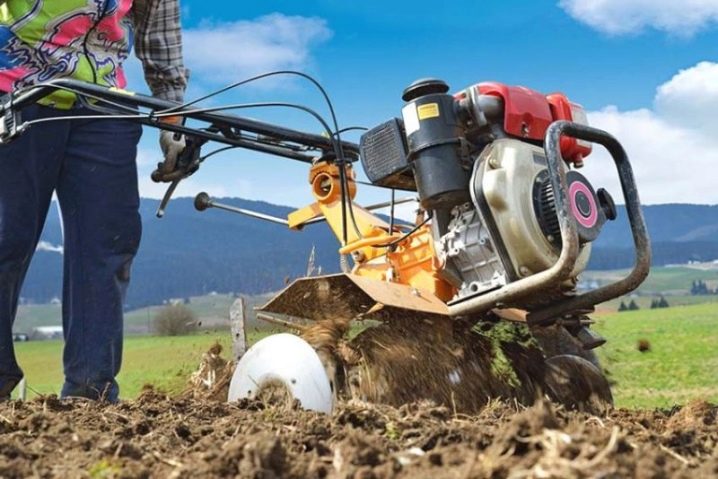
Subtleties of operation
Change the oil in the unit every 100 hours of operation.
The engine oil must be suitable for the following viscosity grade:
- 10W30 - if you plan to work with equipment in the summer season;
- 10W40 - formulations suitable for equipment operating in late autumn, winter or cool early spring.

If for a long time the unit simply stands and is not used (for example, from the last season), then the masters advise to drain the gasoline residues, and then pour in fresh fuel.
Check the air filter in your tiller from time to time. If necessary, it will need to be blown out or a new filter should be installed if the old one is too dirty. Gearboxes in this technique are collapsible or non-collapsible. The latter are not designed for additional services.
If your model contains a collapsible gearbox, then you will need to monitor the state of the lubricant in it.
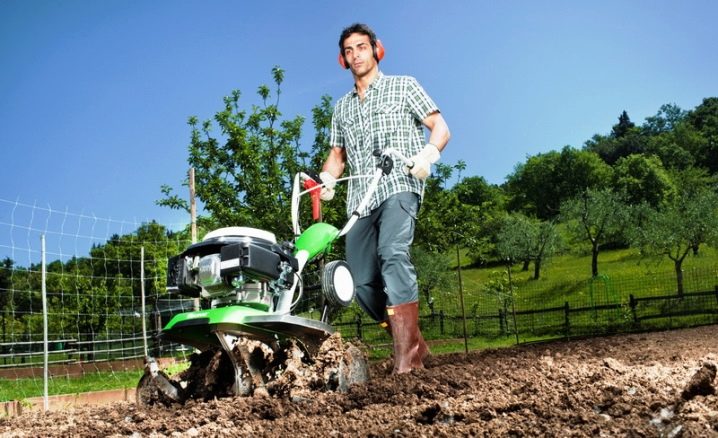
Clean off any dirt deposits from the chain piece from time to time.
For information on how to choose a motor cultivator, see the next video.



































































The comment was sent successfully.